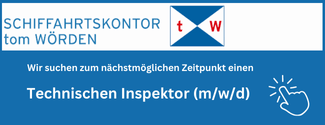In the »RoboVaas« project, a research team is working on a prototype of an autonomous surface vehicle that is coupled to an underwater vehicle, using camera and sensor technology to take pictures of ship hulls and quay walls, but also to collect bathymetric data from the seabed or river bed
For almost ten years, the Fraunhofer Center for Maritime Logistics and Services (CML) has been developing and optimizing processes and[ds_preview] systems along the maritime supply chain. So far, the focus has been on innovation in software solutions and logistics concepts. In recent years, a new area has developed based on the core competencies of the CML: Maritime Robotic Assistance Systems.
It did not take long until the projects on autonomous ships and the challenges they posed were joined by a series of ship handling simulators (SHS). The simulators are intensively used to conduct nautical exercises and safety analysis and to simulate innovative concepts. In order to extend the functions and possibilities of the SHS for special research projects, the Sea Traffic and Nautical Solutions department (STNS) started to develop its own modules and extensions. This work was bundled and accumulated in the »Smartframe« testbed framework, which allows to test visionary concepts in the SHS quickly and efficiently and to perform these tests with certified nautical experts.
Based on this experience coupled with the desire to demonstrate these concepts in a more tangible and illustrative way with the goal to validate them with real data, the project RoboVaaS (Robotic Vessels as A Service) was launched. Its goal is to make maritime operations in coastal waters more efficient and safer by integrating and connecting smaller USV (Unmanned Surface Vehicle) and ROV (Remotely Operated Vehicle), and to offer new services for the shipping industry. Five service concepts have been developed: A real-time anti-grounding service with USV, ship hull and quay wall inspections with a combination of USV and ROV, as well as depth data acquisition and data muling – an innovative form of underwater acoustic data transport.
Technical tasks
Besides project coordination, CML conducts a number of technical tasks. One of those is the anti-grounding service, where a USV and high-quality depth data are integrated in the SHS environment in order to create a realistic simulation scenario: On difficult or poorly mapped port approaches, a USV would travel ahead of a merchant vessel to provide real-time depth data in order to prevent vessel groundings. Depth data and customized warnings will be presented to the user (i.e. the captain) by means of a specially developed web-based interface.
Furthermore, the CML has developed its own demonstration platform for the developed robotic assistance systems – the USV »SeaML«.
Cooperation with Hamburg Port
A central web-based operator interface connects the complex requirements of control as well as data and video transmission between USV and ROV with a land station. Trained operators can operate the vehicles and monitor the services as necessary. Each service is visualised in the web-based user interfaces and thus can be used everywhere – be it on the bridge of a ship or in the control rooms of a port authority. The software was developed in close cooperation with the stakeholders in the Hamburg Port Authority (HPA) and the many years of experience of various experts have been used to improve the software.
Developing maritime hardware concepts in close connection with the associated software is one of the core competencies within the MTB (Maritime Technology and Bionics) team at CML. Specialising in hardware and rapid prototyping, the team is working on concepts for maritime assistance robotics in other EU projects: SeaClear extends the RoboVaaS concept with another use case, where plastic waste removal from waters using AUV and ROV is investigated. In SCIPPER, sensor technology for measuring ship emissions is being developed. The recently started RAPID project extends the demonstrator platform with drones and tackles the air space above the port.
»Green Shipping« & A.I.
With »Green Shipping« being one of the guiding themes for the MTB team, the demonstration platform of the CML will be continuously improved and equipped for the complex task of collecting waterborne waste in SeaClear. The four year project encompasses AI-supported waste detection, collection by ROV and removal by USV as its core concept, whereby CML expands its competencies in robotics, automatic fleet control and server infrastructure. Synergy effects arise to the RAPID project, in which the USV of CML is also used, but in combination with a UAV (Unmanned Arial Vehicle). The core application in RAPID is the continuous inspection of port infrastructure from the air.
For this purpose, the CML will extend its demonstration platform by a drone-landing pad on which a battery hot-swap is possible – an exchange of batteries without interruption of the drone functions. This will multiply the flight time of drones, which is currently limited to 30-50 minutes, and will combine the mobility on water with flexibility in the air. A wide range of applications such as bridge inspection can increase traffic flow in the port and drastically reduce maintenance time and costs, making port operations more efficient and safer. In addition, RAPID will further develop the sensor technology developed in SCIPPER for use on flying drones to enable the measurement of pollution levels and ship emissions in ports by means of UAVs.
Vincent E. Schneider, Johannes Oeffner – Fraunhofer-Center für Maritime Logistik und Dienstleistungen CML















